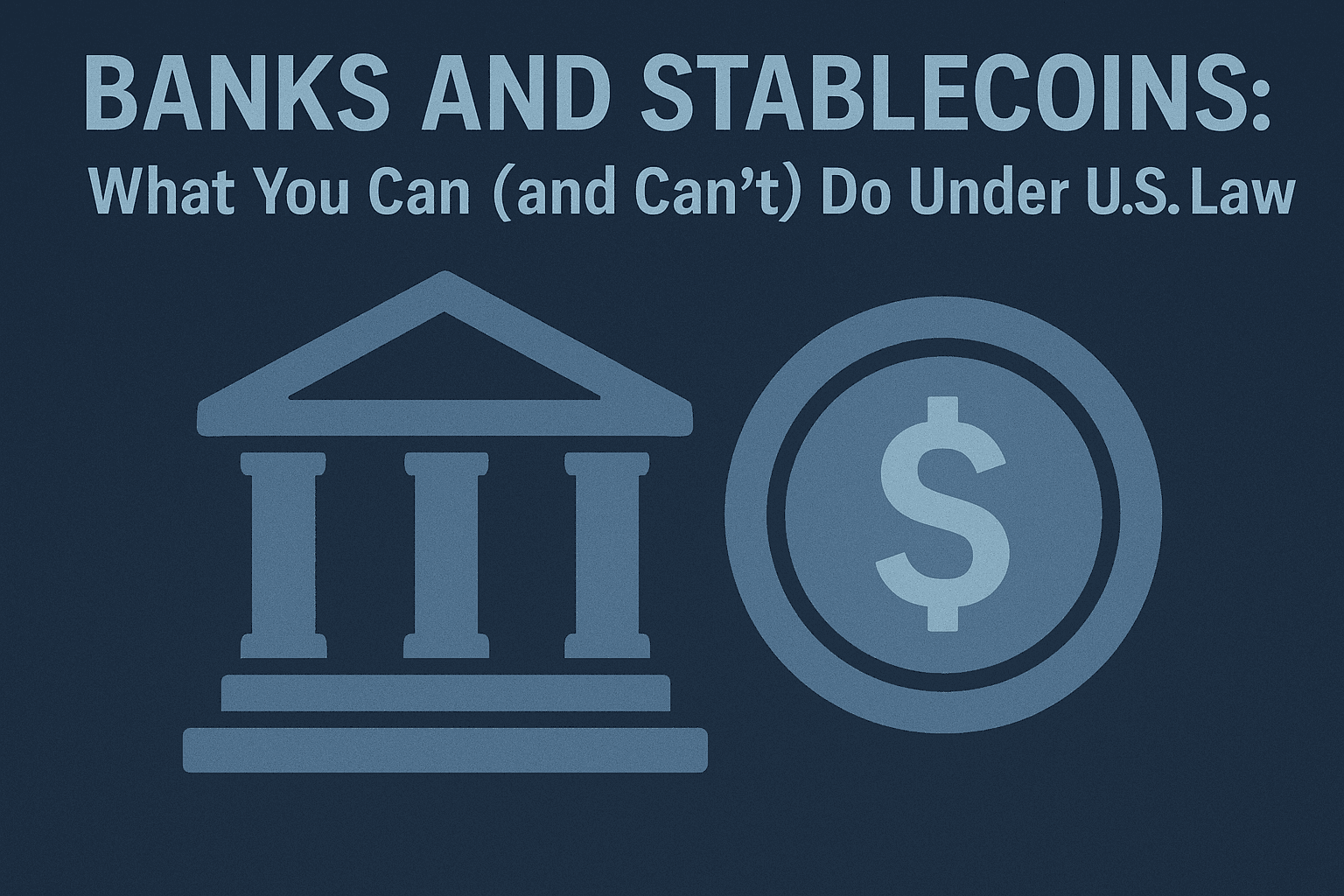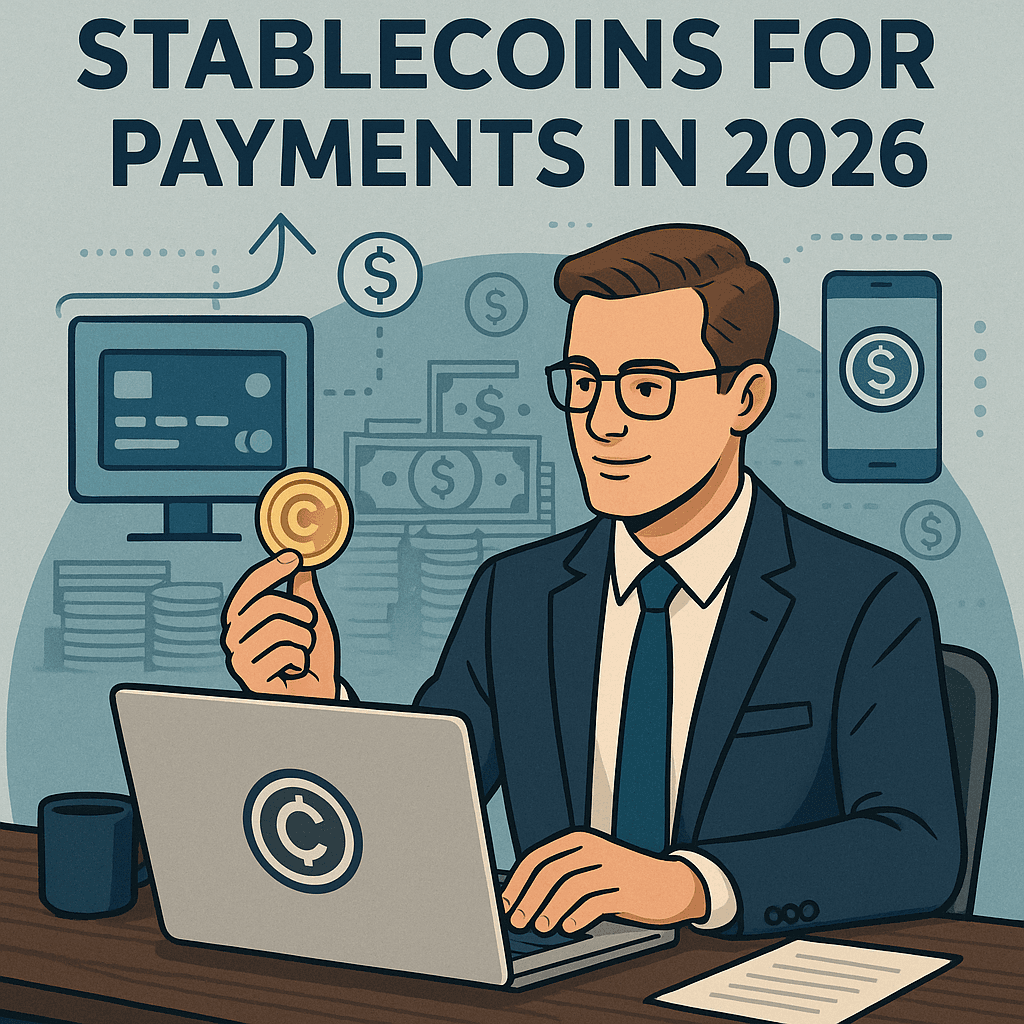The financial world just shifted on its axis. On July 18, 2025, the GENIUS Act became law, creating the first comprehensive federal framework for stablecoin regulation in U.S. history. For banks, this isn't just another compliance update, it's a complete reimagining of how traditional financial institutions can compete in the $238 billion stablecoin ecosystem.
The rules are now crystal clear, but they come with surprising restrictions and unprecedented opportunities. Understanding these regulations isn't optional anymore, it's survival. Here's what every banker needs to know about operating in this new digital currency landscape.
The GENIUS Act: A New Era of Bank Stablecoin Regulation
The Guiding and Establishing National Innovation for U.S. Stablecoins Act fundamentally rewrites the playbook for how banks can engage with digital currencies. Unlike the regulatory uncertainty that plagued crypto for years, this legislation provides explicit pathways for bank participation while imposing strict guardrails.
What Banks Are Now Legally Permitted to Do
Issue Stablecoins Through Regulated Subsidiaries
Banks can establish specialized subsidiaries to issue payment stablecoins, but only after receiving approval from their primary federal banking regulator. This means JPMorgan Chase, Bank of America, Wells Fargo, and thousands of community banks can directly compete with Circle's USDC and other established stablecoins provided they navigate the licensing process successfully.
The application process mirrors traditional bank chartering, requiring demonstrations of financial stability, management competence, and comprehensive operational plans. Federal regulators have 120 days to approve or deny applications, creating a predictable timeline for strategic planning.
Provide Stablecoin Custody Services Without Balance Sheet Penalties
Perhaps the most significant breakthrough for banks: the GENIUS Act explicitly prohibits federal regulators from requiring institutions to recognize custodied stablecoins as liabilities on their balance sheets. This directly overturns the restrictive guidance from SEC Staff Accounting Bulletin 121, which effectively banned banks from offering crypto custody services.
Banks can now offer institutional stablecoin custody, earning fees without the punitive capital requirements that previously made these services economically unviable. This opens immediate revenue opportunities with existing commercial clients who are increasingly adopting stablecoin treasury management strategies.
Partner with Licensed Stablecoin Issuers for Distribution
Banks don't need to become issuers to participate in the stablecoin economy. The GENIUS Act creates clear pathways for banks to serve as distribution partners, providing fiat on-ramps, off-ramps, and integration with traditional banking services for properly licensed stablecoin providers.
These partnerships allow banks to offer stablecoin services to customers without building complex blockchain infrastructure or navigating the full stablecoin issuer licensing process. Regional and community banks, in particular, may find this approach more accessible than direct issuance.
Deploy "Deposit Tokens" as a Strategic Alternative
JPMorgan's JPMD launch demonstrates a crucial regulatory arbitrage opportunity. Deposit tokens, which represent claims on traditional bank deposits but operate on blockchain infrastructure fall under conventional banking regulation rather than stablecoin rules.
This distinction allows banks to offer blockchain-based payment solutions with several competitive advantages: potential interest payments, FDIC insurance, integration with existing banking systems, and avoidance of stablecoin-specific restrictions.
Critical Restrictions Banks Must Navigate
The Yield Prohibition That Changes Everything
The GENIUS Act includes an absolute prohibition: stablecoin issuers cannot pay "interest or yield to holders of payment stablecoins solely in connection with their holding of such payment stablecoins." This restriction fundamentally limits how banks can compete with DeFi protocols offering 4-8% yields on stablecoin deposits.
For banks accustomed to using interest rates as a primary competitive tool, this represents a paradigm shift. Banks must compete on service quality, integration capabilities, and risk management rather than yield generation, at least for traditional stablecoins.
Comprehensive Federal Oversight and Reporting Requirements
Stablecoin-issuing banks face extensive regulatory supervision including monthly reserve audits, detailed public disclosures, and ongoing examination by the Office of the Comptroller of the Currency, Federal Reserve, or FDIC depending on charter type.
These requirements mirror bank supervision but extend to new areas: blockchain operations, smart contract security, digital asset custody protocols, and crypto-specific anti-money laundering programs. Banks need new compliance infrastructure and expertise to meet these standards.
Mandatory 1:1 Reserve Backing with Approved Assets Only
All permitted stablecoin issuers must maintain reserves exactly equal to outstanding stablecoins using only approved assets: U.S. coins and currency, Federal Reserve deposits, Treasury securities with 93-day or shorter maturities, and qualifying money market funds.
This eliminates the fractional reserve lending model that banks traditionally use to generate profits from deposits. Stablecoin operations must be fully collateralized, fundamentally changing the economics of digital currency banking.
JPMorgan's JPMD: The Deposit Token Advantage Explained
JPMorgan's launch of JPMD on Coinbase's Base blockchain reveals why some banks may choose deposit tokens over traditional stablecoins. The key differences have profound strategic implications:
Deposit tokens operate under traditional banking law, meaning JPMorgan can potentially pay interest to JPMD holders—something explicitly prohibited for stablecoin issuers. JPMD tokens represent direct claims on JPMorgan's FDIC-insured deposits, providing government backing that stablecoins cannot offer.
Integration with existing banking infrastructure allows seamless movement between traditional accounts and blockchain-based transactions. Customers can use JPMD for programmable payments, smart contracts, and DeFi applications while maintaining their traditional banking relationships.
Regulatory familiarity means banks don't need to navigate new stablecoin-specific regulations. JPMD operates under existing bank supervision, reducing compliance complexity and regulatory risk.
However, deposit tokens face limitations in crypto ecosystem adoption. Traditional stablecoins like USDC benefit from widespread acceptance across exchanges, DeFi protocols, and payment networks - network effects that deposit tokens must build from scratch.
Business Banking in the Stablecoin Era
These regulatory changes create immediate opportunities for commercial banking clients seeking modern treasury management solutions:
Enhanced Cross-Border Payment Capabilities
Banks can now offer institutional clients real-time international payments using stablecoin rails, settling transactions in minutes rather than days. This particularly benefits import/export businesses, international contractors, and companies with global supply chains.
Cost advantages are significant: stablecoin transfers typically cost fractions of traditional wire fees while providing faster settlement and better transparency. Banks can offer competitive pricing while maintaining healthy margins on these services.
Programmable Treasury Management
Stablecoins enable sophisticated automation capabilities impossible with traditional banking. Businesses can implement smart contracts for automatic vendor payments, milestone-based contractor disbursements, and conditional escrow arrangements.
Yield optimization strategies become possible for banks offering deposit tokens, which can earn interest unlike traditional stablecoins. Commercial clients can maintain operational liquidity while generating returns on idle cash balances.
Compliance and Risk Management
Bank-issued stablecoins and deposit tokens provide enterprise-grade compliance infrastructure that crypto-native alternatives often lack:
Comprehensive AML/KYC programs built into existing bank systems ensure regulatory compliance without additional overhead for business customers.
OFAC sanctions screening and regulatory reporting occur automatically, reducing compliance burden for companies operating in heavily regulated industries.
Audit trails and documentation meet enterprise accounting standards, simplifying integration with existing financial reporting systems.
Strategic Competitive Implications
The GENIUS Act creates several competitive dynamics that will reshape banking markets:
The Tech Company Partnership Opportunity
Large technology companies cannot directly issue stablecoins without establishing regulated financial entities or partnering with existing banks. This creates lucrative partnership opportunities for banks willing to provide regulatory infrastructure for companies like Amazon, Walmart, or major software platforms exploring stablecoin initiatives.
Banks can leverage these partnerships to access massive customer bases and distribution networks while providing specialized financial services expertise.
Foreign Issuer Compliance Challenges
Non-U.S. stablecoin issuers face significant regulatory burdens to operate in American markets, potentially creating competitive advantages for domestic banks. Tether (USDT), the world's largest stablecoin, may face particular challenges as a foreign issuer seeking U.S. market access.
Compliance costs and ongoing regulatory reporting requirements may favor domestic banks with existing regulatory relationships and infrastructure.
The Infrastructure Services Market
Many banks may find greater opportunity in providing infrastructure services rather than competing directly with established stablecoins. Custody services, compliance programs, fiat integration, and traditional banking connectivity represent substantial revenue opportunities without the complexity of stablecoin issuance.
This approach allows banks to participate in stablecoin growth while leveraging existing strengths in risk management, customer relationships, and regulatory compliance.
Implementation Timeline and Strategic Planning
Immediate Strategic Priorities
Choose Your Market Position: Banks must decide whether to pursue direct stablecoin issuance, deposit token development, infrastructure partnerships, or custodial services. Each approach requires different technological investments and regulatory preparations.
Build Blockchain Capabilities: Regardless of strategy, banks need blockchain integration expertise, smart contract understanding, and digital asset operational capabilities. These technical requirements represent significant infrastructure investments.
Develop Compliance Infrastructure: Stablecoin operations require new compliance protocols, risk management systems, and regulatory reporting capabilities. Banks should begin building these systems immediately to meet future requirements.
Identify Partnership Opportunities: Whether with existing stablecoin issuers, technology companies, or fintech partners, strategic alliances will likely determine competitive success in this market.
Competitive Timing Considerations
Banks that establish stablecoin capabilities early may gain significant first-mover advantages. JPMorgan's JPMD launch demonstrates how early market entry can establish thought leadership and customer relationships before widespread competition emerges.
Customer education and adoption takes time, particularly for complex programmable money concepts. Banks starting education efforts now will be positioned to capture market share as regulatory implementation approaches.
Talent acquisition becomes critical as demand for blockchain and digital asset expertise increases across the banking industry. Early investment in specialized teams provides competitive advantages in both development and customer service.
Long-Term Market Evolution
The GENIUS Act represents the beginning, not the end, of stablecoin banking evolution. Several trends will likely shape long-term market development:
Central Bank Digital Currency Integration
As the Federal Reserve continues exploring digital dollar development, banks will need stablecoin infrastructure that can integrate with potential CBDC systems. Early stablecoin capabilities position banks for future CBDC distribution roles.
Programmable Money Expansion
Smart contracts and automated financial workflows will become increasingly sophisticated, creating demand for banks that understand both traditional finance and programmable money capabilities.
International Regulatory Harmonization
As other countries develop stablecoin regulations, banks with early expertise will be positioned to offer international stablecoin services and cross-border payment solutions.
The Strategic Imperative for Banks
The GENIUS Act makes one thing clear: stablecoins are no longer experimental technology, they're regulated financial products with explicit legal frameworks. Banks that treat this as optional innovation risk being left behind as customer expectations and competitive dynamics evolve.
The most successful banks will likely be those that:
Make strategic commitments early and invest in necessary infrastructure
Leverage existing strengths in compliance and customer relationships rather than trying to out-compete crypto-native platforms on technology alone
Focus on business and institutional customers where regulatory compliance provides clear competitive advantages
Build partnerships that accelerate market entry and reduce development risk
For banking leadership, the choice isn't whether to engage with stablecoins, but how to position their institutions for success in an increasingly digital financial landscape. The regulatory framework is established, the market opportunity is substantial, and the competitive window is opening.
The next 8 months will determine which banks emerge as leaders in programmable money and which ones find themselves scrambling to catch up in a market that has already moved beyond them.
Banks that understand these regulations and act strategically will find themselves at the forefront of a financial revolution. Those that wait will discover that in the world of digital currency, being second isn't just losing, it's being left behind entirely.
As this new era of banking begins, one fact emerges clearly: the convergence of traditional finance and blockchain technology isn't a future possibility, it's happening now, with rules that favor institutions prepared to embrace the change.



